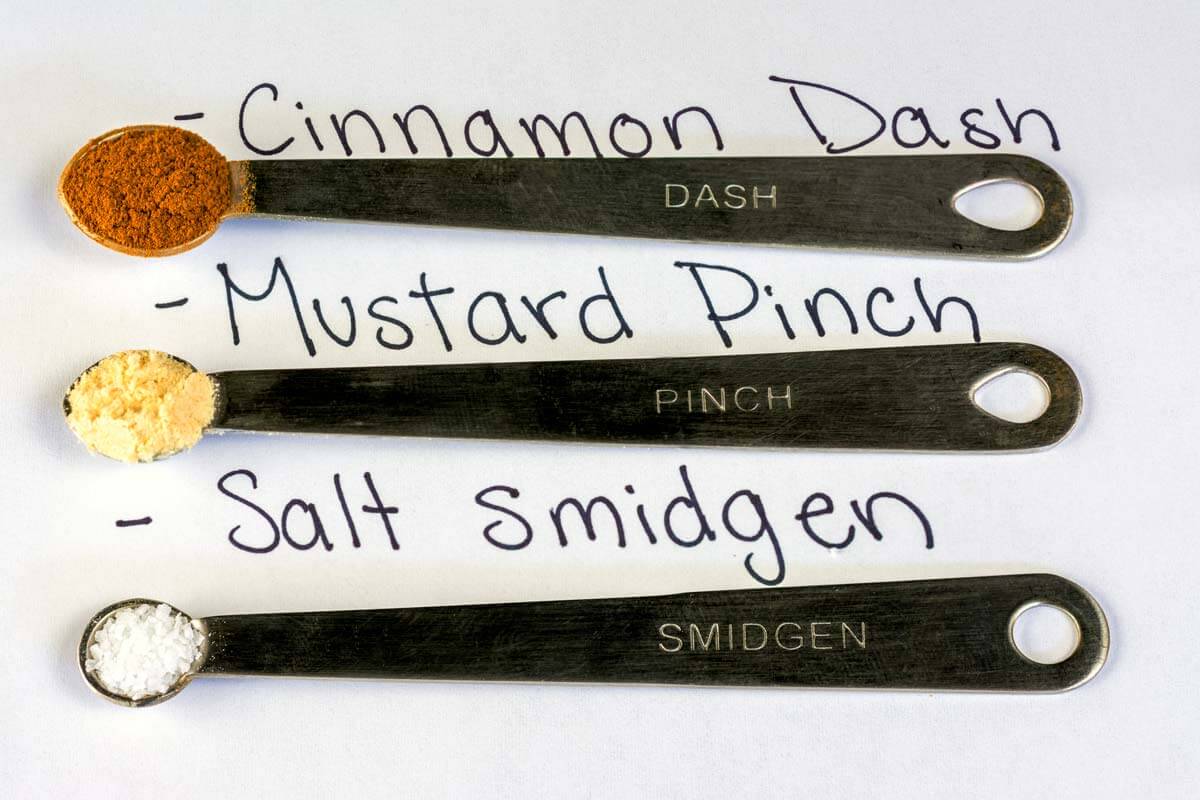What is a Dash, Pinch, Smidgen and Nip?
A dash of this, a pinch of that - they're terms we've all seen in recipes. What exactly do they mean, though?
Old-fashioned measurements explained
These measurements don't have precise, fixed definitions, but there is a general consensus amongst baking experts about what they mean. They all refer to tiny quantities, far smaller than a teaspoon, so put on your glasses...
What is a tad?
A tad measures 1/4 of a teaspoon. Next time a recipe asks you to add a tad of salt, you'll know that they mean 1/4 of a teaspoon.
What is a dash?
A dash measures 1/8 of a teaspoon. A dash is most often used when measuring liquid ingredients for drinks such as cocktails. Think of a dash of bitters or a dash of rum.
What is a pinch?
A pinch measures 1/16 of a teaspoon. It's generally used for a powdery or finely-ground ingredient such as salt, sugar and spice.
What is a smidgen?
A smidgen measures 1/32 of a teaspoon. A recipe might call for a 'smidgen of cayenne', for example.
What is a nip / drop?
A nip and drop both measure 1/64 of a teaspoon. They are commonly used for liquid measurements.
What is a hint?
You might see some recipes refer to a hint of something. This is the smallest measurement of all, defined as a "trace" of the ingredient in question.
Measuring tiny amounts
Now that you know what these words mean, how do you measure such small quantities? It is possible to buy a set of mini measuring spoons helpfully marked with dash, pinch and smidgen. If you've just got standard measuring spoons, things are a little more complicated.

Want to see how much - or, rather, how little - is in one of these measurements? To experiment, measure out 1/4 of a teaspoon of salt. It helps if you have a dark plate or other flat surface to work on, so you can see things clearly. Divide your salt in half - now you have 1/8 of a teaspoon, or a dash. Halve it again and you've got a pinch. Repeat for a smidgen and repeat once more for a nip.
This painstaking process will show you how much - or, rather, how little - is in each of these measurements. Now you can try checking how much you get in a rough pinch of salt. As the name suggests, it's supposed to be the amount you can hold between your thumb and finger when pinching them together. Try this and compare it to the amount of salt you have in your measured pinch. They should be pretty much the same size.
Does accuracy matter?
To be honest, nowadays these terms are generally used to add a certain old-timey flavor to recipe writing. Most of us don't have the time or the patience to painstakingly measure out tiny quantities of ingredients, and in most recipes it won't make much of a difference.
There is one exception: small-batch baking. Baking already demands more precision than other forms of cooking, and if you're producing small batches of baked goods, then using a pinch when you need a smidgen can actually make a difference to the finished product. If you're going to be baking in this way on a regular basis, it might be worth investing in mini measuring spoons. If not, then don't worry about it!
If you find yourself needing to convert any other common cooking units - from teaspoons to cups, pounds and grams, we have a cooking conversion tool for all of these.
